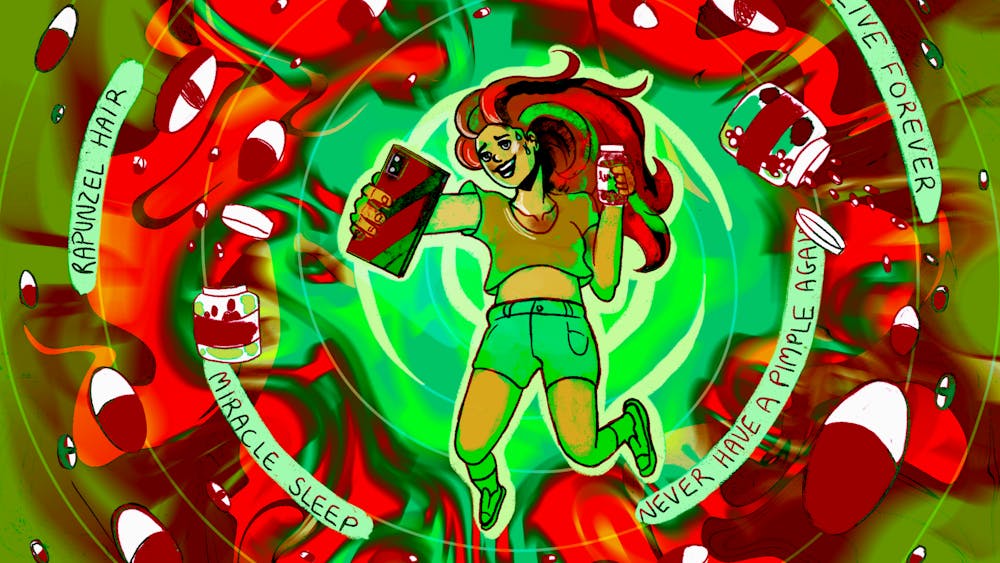Editor's note: The first half of this guest column appeared in Friday, October 15th's Indiana Daily Student.
Twenty-seven thousand, seven hundred and eighty-three elephants.
The average amount of coal burned every year at IU’s Central Heating Plant located just behind the Kelley School of Business is equal to 68,000 tons. That’s roughly 27,783 elephants. In our very own back yard.
If coal were a Christina Aguilera song it would be “Dirrty.” When coal is burned for energy, it leaves behind a filthy residue called coal ash.
In the 1970s, IU’s coal plant deposited its coal ash on a 7.5 acre site located near Griffy Lake Nature Preserve. In 2006, in a rather delayed response to the Clean Water Act of 1972, officials ordered the 375,000 cubic yards of coal to be buried under a layer of soil and a moat built around it to prevent the ash from escaping into the atmosphere and nearby water sources.
Despite this effort, rainwater has been percolating through this coal ash pile for more than 30 years and seeping into nearby streams and lakes which then flow into Griffy Lake. Obviously, this poses drastically detrimental effects for the ecosystem, but I am not exposing this information merely to advocate the rights of the Nemo’s and the Dori’s of Griffy Lake.
Don’t get me wrong, I believe wholeheartedly that “fish are friends,” but Griffy Lake is more than just a delicate ecosystem or an aesthetically pleasing attraction on a nature preserve. According to recent Bloomington legislation, Griffy Lake is our potential source of drinking water. Drinking Water
I don’t know about you, but I always love a cool glass of coal ash on a hot summer’s day. Yum.
But wait, there’s more! Consider this: coal ash is not only invading our potential water source, but also the very air we breathe.
Inevitably, not all coal ash is contained. Much escapes into the air in the form of fly ash. Some of the scrumptious substances composing this fly ash are: arsenic, lead, mercury, selenium, cadmium and other deliciously deleterious dioxins. What are the benefits to these exceptional elements you ask?!
Well, there’s bronchitis, asthma, diarrhea, skin rashes, brittle bones, birth defects ... just to name a few.
In fact, according to a recent study published in the “Scientific American,” “When coal is burned into fly ash, uranium and thorium [both radioactive elements] are concentrated at up to 10 times their original levels.”
Often this uranium leaches into the surrounding water sources, thus “people living within a ‘stack shadow’ — the area within a half-to one-mile radius of a coal plant’s smokestacks — might then ingest small amounts of radiation.”
If these findings still fail to induce indignation, the study also concluded that “the fly ash emitted by a power plant ... only carries into the surrounding environment 100 times more radiation than a nuclear power plant producing the same amount of energy!”
Dearest IU students, next time you go strolling by the Kelley School of Business, be sure not to inhale too deeply. On the bright side, the E.P.A. is currently in the process of getting fly ash classified as a hazardous waste. It’s slow going, don’t hold your breath.
Or do.
Needless to say, looking over this discouraging data, the irony of this year’s themester of sustainability confounds me. Don’t get me wrong, stainless steel water bottles are great, but seem kind of irrelevant when they could be filled with the same substance that turned Nemo into Nessy.
However, I do applaud the efforts of our University to finally “get green.” It is true that in taking one step at a time one can cover a great distance; I smile inside every time I witness a student toss a bottle into the recycling rather than the trash, or when I see the words “conserve energy” written on light switches, or the “every drop counts” signs on water fountains.
Truly, we have made progress.
Call me a complainer, but when humanity’s health is at risk, we need to be leaping, not taking baby steps. Tree hugger that I am, it pains me to say this, but trees are expendable to an extent. Lives are not.
The reliance on this dirty black substance is an infamous ‘black spot’ for IU, and it is about time we washed ourselves clean of it, for the better of our world and everyone within it.
- Emily Jackson is an Indiana University student majoring in environmental management.
Guest columnist: IU's coal plant and the black plague
Get stories like this in your inbox
Subscribe





